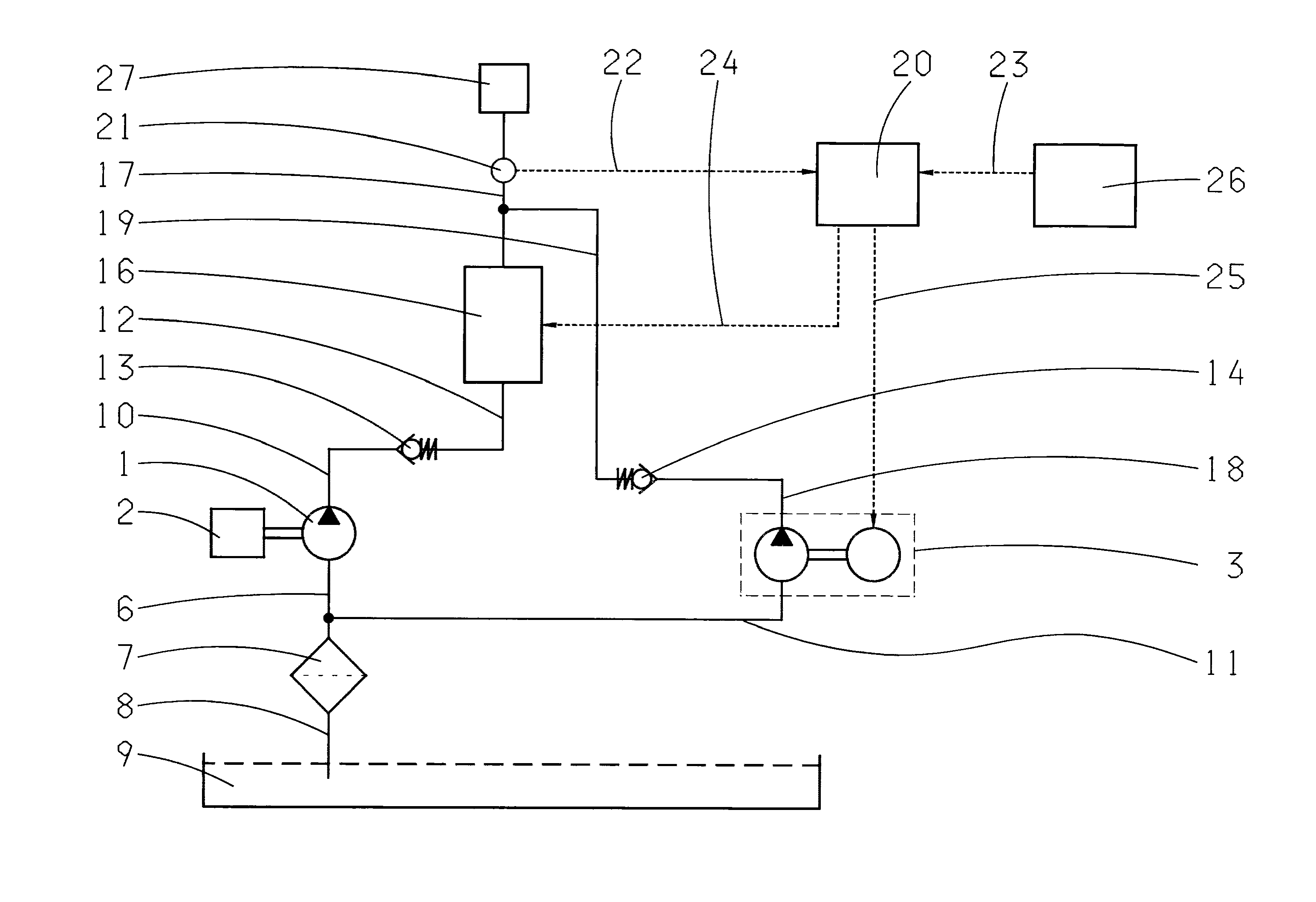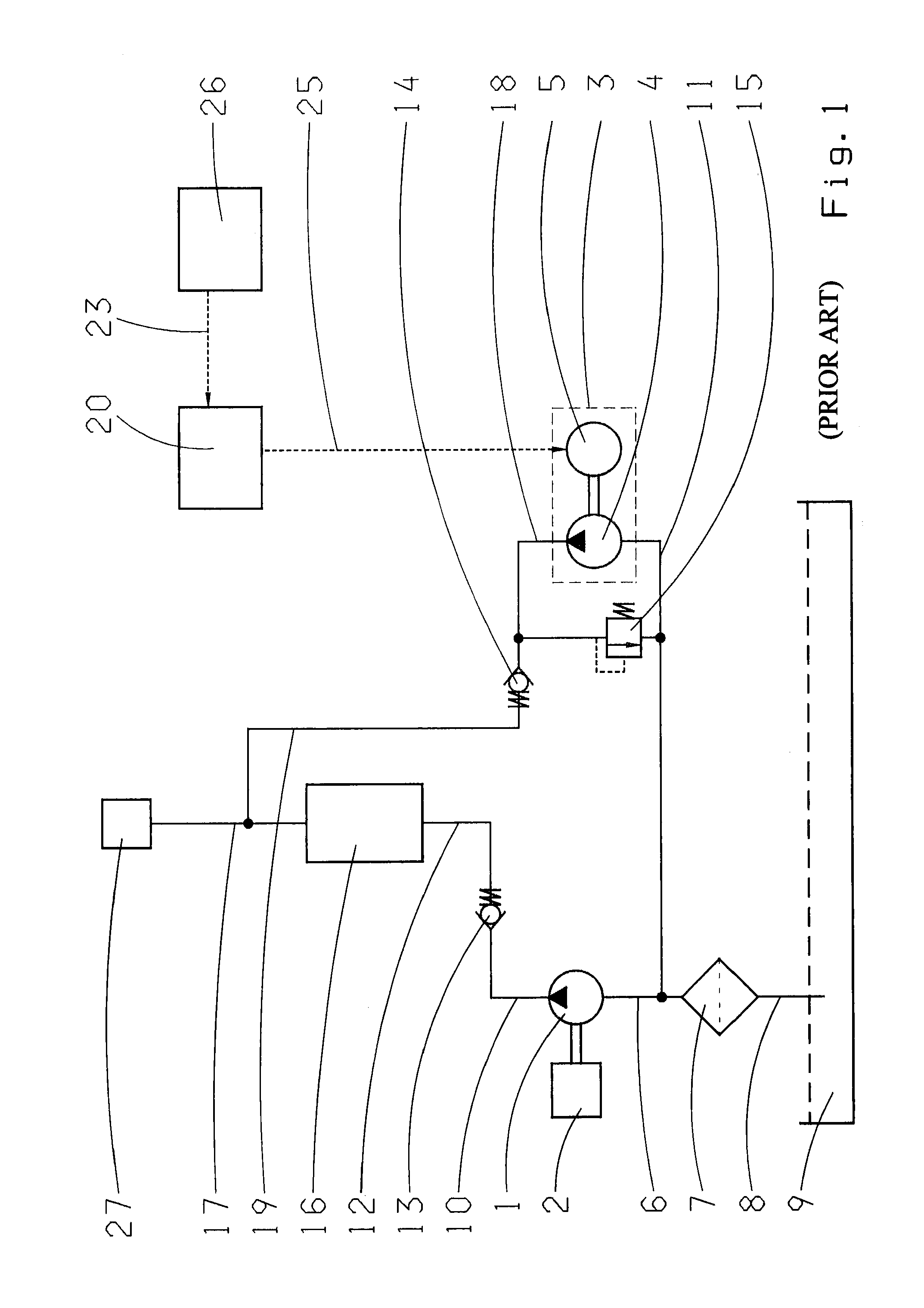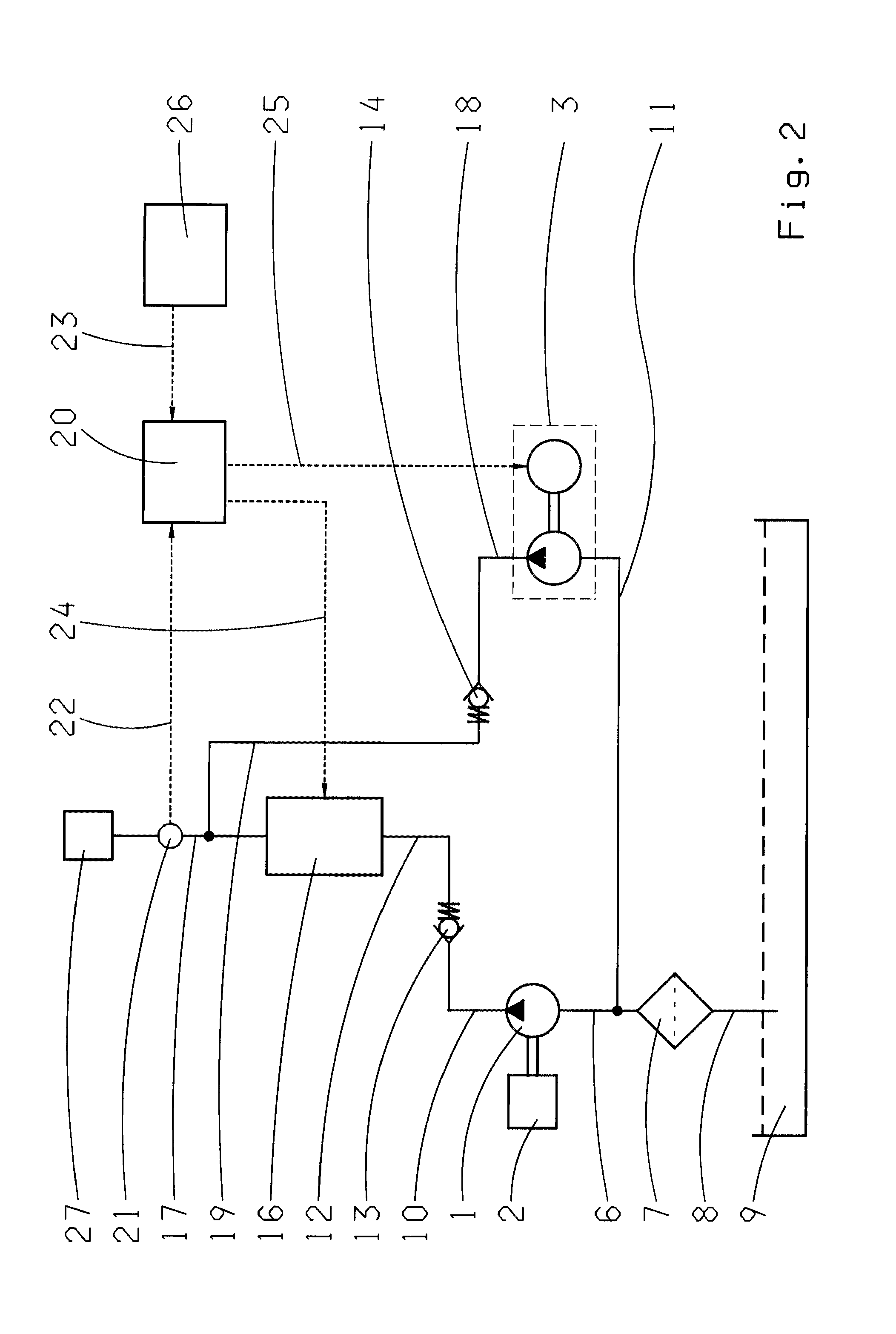Method of operating an auxiliary electric pump
a technology hydraulic system, which is applied in the direction of vehicle position/course/altitude control, process and machine control, instruments, etc., can solve the problems of auxiliary electric pump not being designed, energy loss with corresponding adverse effects on the efficiency of hydraulic system and transmission, and construction effort and cost, so as to limit the loading of electric auxiliary pump
- Summary
- Abstract
- Description
- Claims
- Application Information
AI Technical Summary
Benefits of technology
Problems solved by technology
Method used
Image
Examples
Embodiment Construction
[0027]FIG. 1 shows a hydraulic system of an automatic transmission according to the prior art. The hydraulic system comprises a main pump 1 and an electric auxiliary pump 3. The main pump 1 is driven mechanically by an internal combustion engine 2, which serves to drive the vehicle. Alternatively an electric motor would also be conceivable for driving the vehicle, or a combination of both types of motor. The main pump 1 can be in the form of a displacement pump, in particular a gearwheel pump. Of the possible design forms of a gearwheel pump as an inner or outer gearwheel pump, in an automatic transmission the use of an inner gearwheel pump is preferred because of its compact structure. The electric auxiliary pump 3 comprises a pump 4 and an electric motor 5 that drives it, the pump 4 also preferably being in the form of a displacement pump.
[0028]The main pump 1 draws up an operating medium stored in the transmission sump 9, preferably oil, through a suction line 6, a filter 7 and a...
PUM
 Login to View More
Login to View More Abstract
Description
Claims
Application Information
 Login to View More
Login to View More - Generate Ideas
- Intellectual Property
- Life Sciences
- Materials
- Tech Scout
- Unparalleled Data Quality
- Higher Quality Content
- 60% Fewer Hallucinations
Browse by: Latest US Patents, China's latest patents, Technical Efficacy Thesaurus, Application Domain, Technology Topic, Popular Technical Reports.
© 2025 PatSnap. All rights reserved.Legal|Privacy policy|Modern Slavery Act Transparency Statement|Sitemap|About US| Contact US: help@patsnap.com



